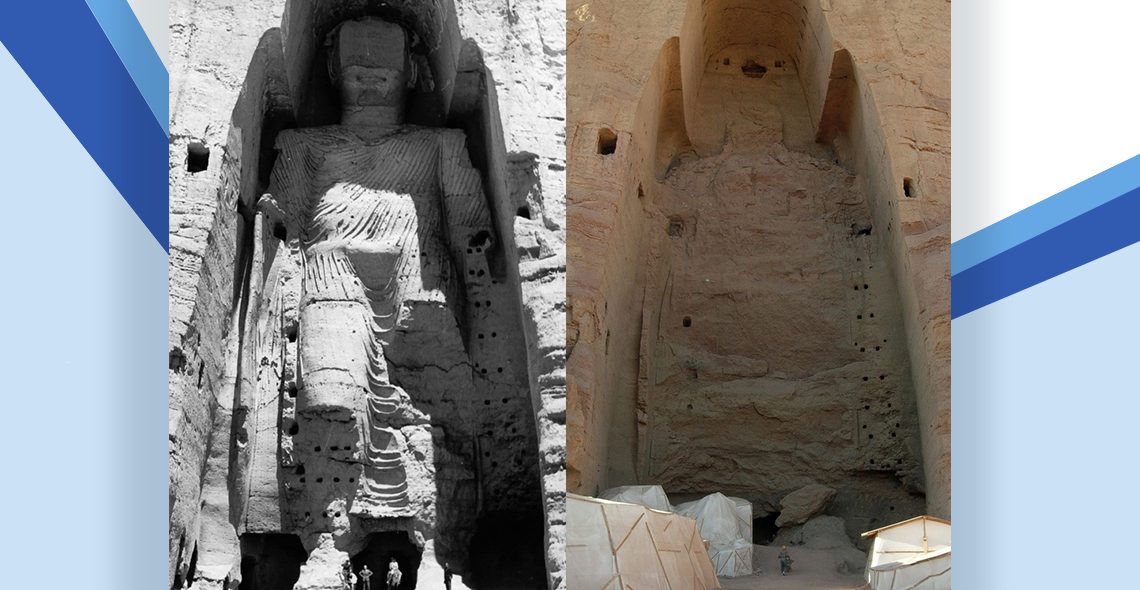The violent death of African-American George Perry Floyd on May 25, 2020 shocked the world. Just a day later, protests against racism and police violence started in the United States, the United Kingdom, France, Belgium, Germany and other countries. This protest is by no means peaceful; it is marked by riots and looting. The protesters’ anger is not only directed against racial profiling in police investigations or the everyday racist discrimination of groups of the population. The anger is also directed against their own past.
Statues of Christopher Columbus, the “discoverer” of the New World, were dismantled and destroyed in various cities in the United States, as his violent behaviour towards the indigenous population of America made a decisive contribution to the transatlantic slave trade. The city of San Francisco dismantled his statue at the Coit Tower after it had been victim to vandalism three times in a week and activists meeting on social media had called for the statue to be destroyed. At the same time, a fierce debate about the naming of military bases after Confederate officers and the destruction of their statues broke out.
In the English city of Bristol, supporters of the BlackLivesMatter movement (BLM) threw the statue of Edward Colston into the city’s harbour. Colston was not just a slave trader who was responsible for the enslavement of over 80,000 men, women and children between 1672 and 1689. He was also a benefactor who brought wealth to Bristol during his lifetime. He bequeathed his fortune to the city after his death; streets, buildings and other monuments were named after him. Dealing with his statue will split the population for many years. Some of Bristol’s residents want to honour the memory of Colston. Others emphasize the importance of Colston for the transatlantic slave trade, colonization and exploitation and expects a critical analysis of the city’s history, with no worship of slave traders. In London, the statue of Winston Churchill in Parliament Square had to be saved from demonstrators. Despite his importance as a statesman and adversary to Hitler, Churchill also had a dark side that is often kept secret in public. In 1943, as the British Prime Minister, Churchill was largely responsible for the famine in Bengal, in which around 3 million people died.
Iconoclasm is strongly condemned by governments worldwide. It represents a phenomenon that was a symbol of political or religious revolution already in antiquity and up to the modern age. In Egypt in the 14th century BC, Pharaoh Akhenaten undertook a comprehensive reorientation of Egyptian religion, politics and art. Only after the death of Akhenaten and his successor Semenchkare were the testimonies of the “Amarna period” destroyed and the old gods continued to be worshiped. In order to erase the memory of the hated “heretic pharaoh”, his statues were destroyed and portraits or names were erased in temples and other places. In the first century AD, the Roman emperor Nero suffered a similar fate. Because of his political unpredictability and behaviour, which seemed unworthy of an emperor, he was subject to damnatio memoriae (the condemnation of memory) during his lifetime.
The destruction and prohibition of symbols of National Socialism or the destruction of the Berlin Wall, which initiated the beginning of German reunification, had a lasting impact on Germany’s history in the 20th century and paved the way for important political and social developments. In contrast, the destruction of Bamiyan’s Buddha statues in the heart of Afghanistan provoked a worldwide outcry. The 53 and 35 m high statues were listed as World Heritage by UNESCO and were destroyed by the Taliban in 2001. The aim of this performative iconoclasm was not only to erase un-Islamic features, but also to attack the western concept of cultural heritage.
The worldwide protests against racism and police violence are now directed against the cultural heritage of the respective cities and countries, against statues and other monuments. History will show whether this anger really leads to a change in society and equal rights for all communities.
Michaela Reinfeld.
[Image: The taller Buddha of Bamiyan before (left picture) and after destruction (right)].
(Von Buddha_Bamiyan_1963.jpg: UNESCO/A Lezine; Original uploader was Tsui at de.wikipedia.Later version(s) were uploaded by Liberal Freemason at de.wikipedia.Buddhas_of_Bamiyan4.jpg: Carl Montgomeryderivative work: Zaccarias (talk) – Buddha_Bamiyan_1963.jpgBuddhas_of_Bamiyan4.jpg, CC BY-SA 3.0, https://commons.wikimedia.org/w/index.php?curid=8249891)

